Behind the Scenes: Scenic and Costume Design of FEN
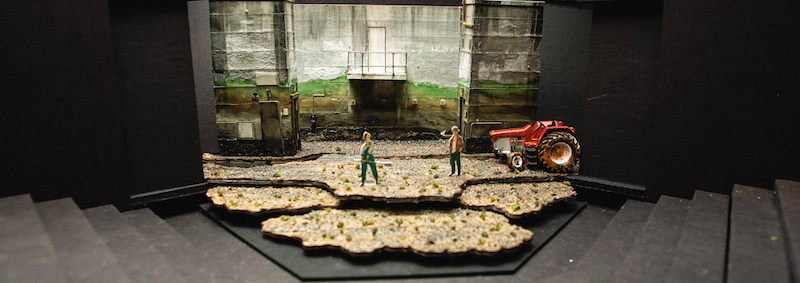
Caryl Churchill’s Fen is ambitious. Entrenched in rich history, stunning language, and astonishing theatrical imagery, this is a production that is not just seen. It is felt. It invites audiences to engage with its ideas, rather than passively absorb them, and – as such – creates a uniquely satisfying theatrical experience.
Central to that experience are the design elements. The scenic and costume designs underscore where these characters are (both literally and figuratively), who they are, and why that matters. These design choices are, in part, what makes the story so visceral and impactful; they add another layer to Churchill’s narrative and another way for audiences to connect with the story.
Here, Scenic Designer Collette Pollard and Costume Designer Izumi Inaba offer a behind-the-scenes look at their process and inspiration, and the design choices that bring this layer of storytelling to life. Let’s take a look!
Scenic Design
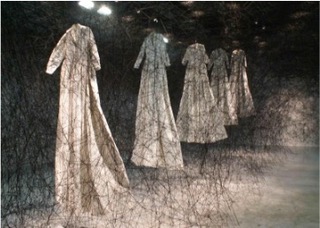
Collette: As a woman working on the production, it felt really important to look at other influential female artists, so that’s where we started. One of the artists we looked at was Chihara Shiota. She uses fabric and a variety of common objects to create large-scale thread installations. These ghostly worlds explore and confront fundamental human concerns such as life, death and relationships.
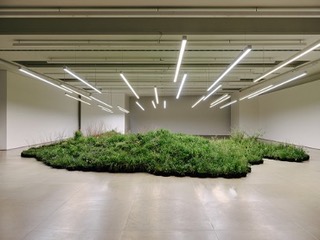
Next, we looked at Linda Tegg. She is infinitely curious about the way humans interact with nature and the world and has a beautiful installation called Adjacent Field. She took inspiration from former industrial sites, places plants had started to reclaim. All the plants in the installation were sourced from abandoned fields on the outskirts of Milan. So it’s quite diverse – a fern here, an edible plant there – and that was really interesting to us, in terms of draining the land to grow crops and manufacturing. Plus, her work has this great quality of being very organic in spaces that are rigid and sparse, so that was exciting to us as well.
The work of Kamel Mennour was inspiring to us – we loved how her work poses the question of what’s beyond, and we loved the fonts that she used. And then finally, Isabelle Menin. She creates these paintings that are incredibly beautiful, but they come from so much personal pain. And that dynamic of beauty and pain is what the play itself feels like. This production will have a really tight color palette, and some of those colors are pulled from Menin’s work.
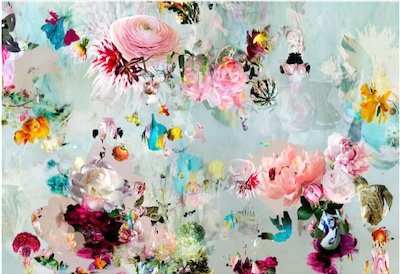
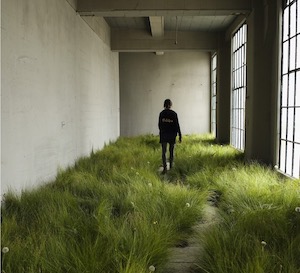
Continuing that thread of inspiration, we kept looking at factories and potato plants, and nothing was really working for us. We then looked at an image of a sluice, which is what was built to drain the fens of all their water, and it became really influential for us in terms of our design. The texture created when the water leaves from filling up and draining became the scenic texture for our world. History is a huge part of this piece – the cycles, the women, where we’re headed, the ghost in the beginning – so the water comes in, cycles out, and leaves behind this really beautiful coloring that almost feels like a painting.
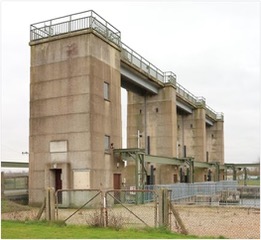
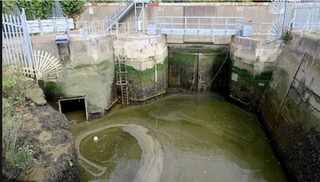
The land itself is another huge part of the play. This play poses so many interesting challenges, like, How are the actors going to find the potatoes in the fields? How are they finding the rocks? This is still a work in progress for us, but what I can say is that we plan to use a carpet base and real dirt to allow for the picking, the farming, and its presence is underfoot all of the domestic work as well.
There’s also a tractor! It is a working 1950s tractor, so you’ll have a tractor that comes on stage. We’re really excited about that. [laughs]
We’ve had a lot of conversations about the tension that exists in gender, and how in this play, men have the power – literally, the engine power – and how important it is to juxtapose that against the women who’re on the ground, picking potatoes and onions on their knees.
In this piece, for us, everything has to be from Val’s point of view. When she sees something, the world of the play responds to her seeing something and discovering something, and we can convey that through the visual cues. So, the love story – when Frank and Val are dancing, we’re going to use a projection of the sky and stars, and the stars will move across the set, almost like a time lapse, representing how she feels in that moment.
The ghost boy: you’ll see a figure of the little boy run across, he’s chasing away crows, is an important part of the history of the Fens haunting the others. We’re playing with the idea of the boy being included in the pre-show and then there are little moments where we see ghosts throughout the rest of the play, and then another little moment, and another. The dignity of the ghosts in the play is important. We need to make them as real as possible so that we care about them, and projections will help tell that story.
Finally, flowers! We were looking at these huge, operatic flowers and thinking, How do we do this? Why would we do this? Should we even do this? Playing with the idea of that release, that pressure cooker that Vanessa has talked about, what would happen if it exploded? What would beauty look like in that world? Sadly, in draining the Fens, a lot of the natural wildflowers were killed, and a lot of them are now extinct, which relates to the women, Val, and the freedom of desire. The question of what the land might have looked like if we had left it alone. We’re working on building pipes throughout the set that push flowers through so they can “grow” by the end of the production. We’ve talked about flowers growing as the women enter, we talked about the flowers growing as the women transform into their new selves, and maybe the flowers trail behind them as they exit – we don’t know what works best yet, but we what we do know, is that every piece of this set is about creating a meaningful moment that support the women telling this story.
Costume Design
Izumi: The costumes of Fen are inspired by women working in fields across various time periods. My research wasn’t limited to the Fenlands in the 1980s, however. I looked at different geographical areas and made sure to pay special attention to the women and what they were wearing. Photographs by Sally Mann also provided further internal and emotional inspiration that guided my design process.
My process complements Collette’s; the costumes and the colors are designed to stand out in the environment that she’s creating for Fen. The women’s garments will be lived-in and worn, but they’re also from the 1980s, so they’ll be colorful and will stand out against the dark and harsh set. Each of the women will have practical farm gear – something that their characters would work in – that’ll be covered in dirt, but we’ll also get these pops of intense color that will contrast with the land. Putting these dramatically different looks together will set the natural, organic world in opposition to the industrialized world, the world of capitalism, in which these women are living and working.
There are a lot of characters in this play – all of the actors play multiple roles – so there are lots of costume changes accordingly. The most dramatic change, however, will be at the play’s conclusion. In that big moment, when Val makes her decision, the other female ensemble members will evolve into something beyond their ordinary selves; they’ll become more powerful and more beautiful. I’m thinking Loie Fuller, I’m thinking Lady Gaga. I think it will be a great transformation and a great surprise for the audience. I can’t wait.
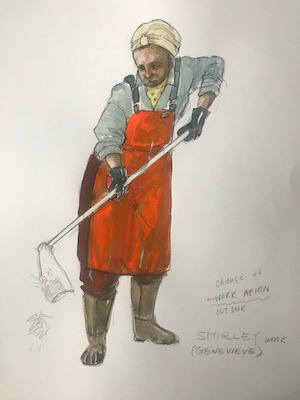
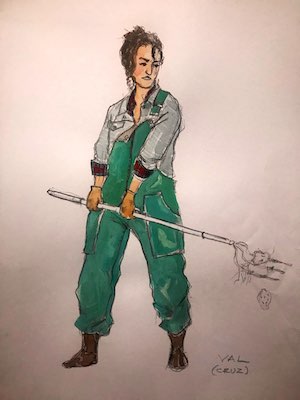
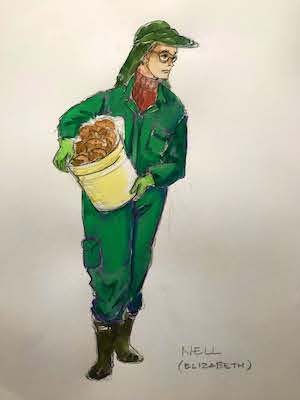
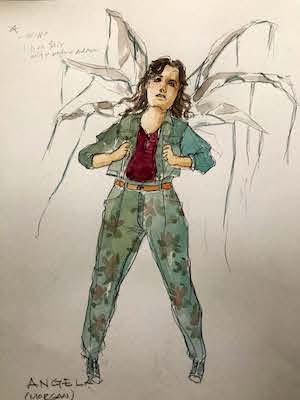
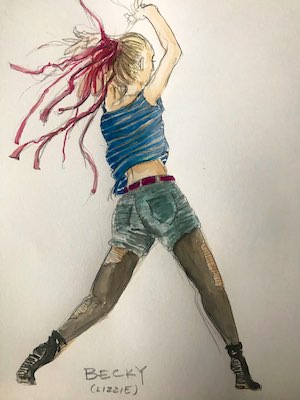
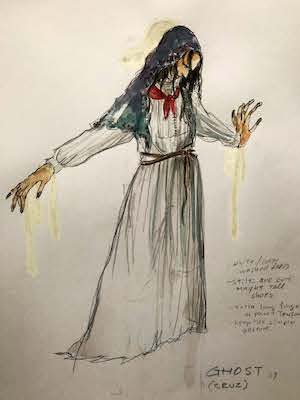
Fen runs from Feb 10, 2023 — Mar 05, 2023 and tickets are available now. Join us and see these stunning designs on stage!